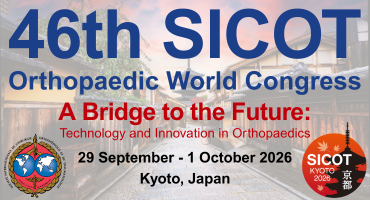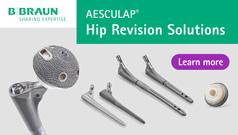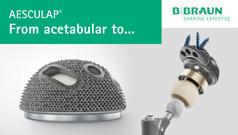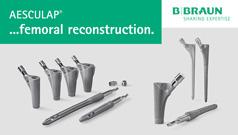
Exam Corner
Foot & Ankle
SICOT Associate Member & SICOT Newsletter Associate Editor – London, United Kingdom
Questions
Which of the following structures locks the transverse tarsal joints during toe-off phase of gait?
Anterior tibialis tendon
Posterior tibialis tendon
Extensor hallucis longus
Peroneus longus
Peroneus brevis
The Lisfranc ligament runs from:
Medial cuneiform to base of the first metatarsal
Medial cuneiform to dorsum of the second metatarsal
Medial cuneiform to base of the second metatarsal
Middle cuneiform to dorsum of the second metatarsal
Middle cuneiform to base of the second metatarsal
Which of the following is more commonly involved in stress fractures?
First metatarsal
Second metatarsal
Third metatarsal
Fourth metatarsal
Fifth metatarsal
During the Heel-strike phase of gait which of the following is true?
The anterior tibialis contracts concentrically
The anterior tibialis contracts eccentrically
Gastrocnemius-soleus complex contracts concentrically
Gastrocnemius-soleus complex contracts eccentrically
Hindfoot is locked/inverted for energy absorption
During the Foot-flat phase of gait which of the following is true?
The anterior tibialis contracts concentrically
The anterior tibialis contracts eccentrically
Gastrocnemius-soleus complex contracts concentrically
Gastrocnemius-soleus complex contracts eccentrically
Hindfoot is locked/inverted for ground accommodation
During the Toe-off phase of gait which of the following is true?
The anterior tibialis contracts concentrically
The anterior tibialis contracts eccentrically
Gastrocnemius-soleus complex contracts concentrically
Gastrocnemius-soleus complex contracts eccentrically
Hindfoot is unlocked/everted for ground accommodation
Common deformities seen in a rheumatoid foot include all of the following except?
Hammer toes
Claw toes
Hallux varus
MTPJ dislocations
Pes planovalgus
The position for arthrodesis of the hindfoot is:
0-5 degrees hindfoot valgus, neutral abduction/adduction and plantigrade
0-5 degrees hindfoot valgus, 5 degrees abduction and 5 degrees plantar flexion
0-5 degrees hindfoot varus, neutral abduction/adduction and plantigrade
0-5 degrees hindfoot varus, 5 degrees abduction and plantigrade
0-5 degrees hindfoot valgus, 5 degrees adduction and 5 degrees dorsiflexion
Baxter neuritis presents with plantar medial heel pain and is caused by compression of which of the following?
Medial plantar nerve
Lateral plantar nerve
Tibial nerve
Sural nerve
Saphenous nerve
Grade 3 according to Wagner Meggitt classification of foot ulcerations include?
Superficial ulcer
Ulcer with exposed bone/osteomyelitis or abscess
Deep ulcer
Local gangrene
Whole foot gangrene
Which of the following classification systems address osteoarthritis of the first metatarsophalangeal joint?
Hattrup and Johnson
Johnson and Myerson
Berndt and Harty
Hepple
Eichenholtz
In diabetic neuropathy, all of the following are true except:
90% of patients who cannot feel a 5.07 monofilament have lost protective sensation of their feet and are at risk of ulceration
Small intrinsic musculature of the foot are affected resulting in claw toes and ulcers
Minimum absolute toe pressures for healing is 40mmHg
Transcutaneous oxygen pressure of the toes <40mmHg has been found to be predictive of healing
In the coalescence phase, less inflammation, less swelling and less erythema are expected
In talar fractures, all of the following are true except:
Constitute less than 1% of all fractures and second among all tarsal fractures
Blood supply is provided by the posterior tibial artery, the dorsalis pedis artery and the perforating peroneal artery
The arteries of the tarsal sinus, tarsal canal and the deltoid are important branches of the main vessels
The artery to the tarsal sinus carries the main supply to the talar body
In type II Hawkin fracture, the only remaining blood supply comes from the deltoid branch of the posterior tibial artery
In calcaneal fractures, all of the following are true except:
Extraarticular fractures with significant displacement may endanger posterior skin
Lateral wall blow out causes subfibular impingement
Disruption of the medial soft tissue does not increase the operative complication rate as opposed to lateral soft tissue trauma
Delayed wound healing after operative fixation can occur in 25% of patients undergoing an extensile lateral approach. However, deep infection is much lower at 1-4%.
EHL is at risk during placement of screws from lateral to medial at the level of the sustentaculum constant fragment
In subtalar dislocations, all of the following are true except:
Lateral dislocations are more common than medial dislocations
In medial dislocations, obstacles to reduction include extensor digitorum brevis, the extensor retinaculum and peroneal tendons
In lateral dislocations, obstacles to reduction include posterior tibial tendon and flexor hallucis longus tendon
CT scan is recommended to rule out small intraarticular fragments
Reduction can be accomplished under sedation or general anaesthesia
In hallux valgus, all of the following are true except:
The pathophysiology is likely multifactorial
Dorsolateral migration of abductor hallucis causes the muscle to pronate the phalanx
First metatarsal head moves medially off the sesamoids, increasing the intermetatarsal angle
Secondary contractures of the lateral capsule, adductor hallucis, lateral metatarsal-sesamoid ligament and intermetatarsal ligament occurs
The metatarsophalangeal joint may or may not remain congruent
In Charcot-Marie-Tooth (CMT) disease, all of the following are true except:
It is the most common inherited progressive neuropathy affecting 1 in 2500 people
Type I is the most common presentation of CMT
Tibialis posterior and peroneus brevis are weak
First ray is plantar flexed due to relatively unopposed peroneus longus
Intrinsic wasting leads to overpull of extrinsics causing claw-toe deformities
In rheumatoid arthritis, all of the following are true except:
It is a chronic, symmetric polyarthropathy that most commonly presents in the third and fourth decades
More common in females
Forefoot is less commonly involved than midfoot or hindfoot
Toes sublux or dislocate dorsally, deviate laterally into valgus, and develop hammering
Pes planovalgus may be midfoot or hindfoot driven
In hallux rigidus, all of the following are true except:
Osteoarthritis of the interphalangeal joint affects treatment options
Position for fusion is 10-15 degrees of dorsiflexion and slight valgus
Silicon arthroplasty is a well recognised and accepted treatment
Cheilectomy is performed for early stages of the disease for dorsal osteophytes formation
Patients present with pain, swelling and a positive grind test
Regarding pes planus, all of the following are correct except:
Most common cause of adult acquired pes planus is tibialis posterior tendon dysfunction
The presence of gastrocnemius contracture should be assessed and corrected with a gastrocnemius recession if present
A negative lateral talo-first metatarsal angle and talonavicular uncoverage are common radiological findings
A cotton osteotomy is used to dorsiflex the first ray
FDL or FHL tendon transfers are used for stage II disease
Answers
b
During toe-off, the transverse tarsal joints become divergent and lock, providing stiffness to the foot for forward propulsion. Failure of the posterior tibialis tendon to lock those joints is the biomechanical aetiology for lack of a heel-rise in patients with tibialis posterior tendon dysfunction.
Reference: Review of Orthopaedics, Millerc
The Lisfranc ligament runs from the medial cuneiform to base of the second metatarsal.
Reference: Review of Orthopaedics, Millerb
The first metatarsal is the widest and shortest and bears 50% of the weight during gait. The second metatarsal is usually the longest and experiences more stress than other lesser metatarsals.
Reference: Review of Orthopaedics, Millerb
During the Heel-strike phase of gait the anterior tibialis contracts eccentrically and the Hindfoot is unlocked/everted for energy absorption.
Reference: Review of Orthopaedics, Millerd
During the Foot-flat phase of gait the Gastrocnemius-soleus complex contracts eccentrically and the hindfoot is unlocked/everted for ground accommodation.
Reference: Review of Orthopaedics, Millerc
During the Toe-off phase of gait Gastrocnemius-soleus complex contracts concentrically and the hindfoot is locked/inverted to provide a rigid lever arm for toe-off.
Reference: Review of Orthopaedics, Millerc
A Hallux valgus as opposed to a Hallux varus deformity is common in rheumatoid patients.
Reference: Review of Orthopaedics, Millera
Hind foot fusion position is 0-5 degrees hindfoot valgus, neutral abduction/adduction and plantigrade. All other options are incorrect.
Reference: Review of Orthopaedics, Millerb
Baxter neuritis presents with plantar medial heel pain and is caused by compression of the first branch of the lateral plantar nerve.
Reference: Review of Orthopaedics, Millerb
0. Foot at risk; 1. Superficial ulcer; 2. Deep ulcer; 3. Ulcer with exposed bone/osteomyelitis or abscess; 4. Local gangrene; 5. Whole foot gangrene.
Reference: Surgical Exposures in Orthopaedics, Hoppenfelda
Hattrup and Johnson: 1st MTPJ osteoarthritis; Johnson and Myerson: Pes planus; Berndt and Harty and Hepple: Osteochondral lesions of the ankle; Eichenholtz: Charcot arthropathy.
Reference: Review of Orthopaedics, Millerd
Transcutaneous oxygen pressure of the toes >40mmHg has been found to be predictive of healing.
Reference: Review of Orthopaedics, Millerd
The artery to the tarsal canal carries the main supply to the talar body.
Reference: Review of Orthopaedics, Millere
FHL is at risk during placement of screws from lateral to medial at the level of the sustentaculum constant fragment.
Reference: Review of Orthopaedics, Millera
Medial dislocations are more common than lateral dislocations.
Reference: Review of Orthopaedics, Millerb
Plantar-lateral migration of abductor hallucis causes the muscle to pronate the phalanx.
Reference: Review of Orthopaedics, Millerc
Tibialis anterior and peroneus brevis are weak.
Reference: Review of Orthopaedics, Millerc
Forefoot is more commonly involved than midfoot or hindfoot.
Reference: Review of Orthopaedics, Millerc
Silicone arthroplasty is not recommended due to silicone synovitis and associated osteolysis which result in pain, metatarsalgia and poor results of subsequent fusion.
Reference: Review of Orthopaedics, Millerd
A cotton osteotomy (dorsal open-wedge osteotomy of the cuneiform) is used to plantarflex the first ray if it remains elevated after correction of the hindfoot to neutral.
Reference: Review of Orthopaedics, Miller

















